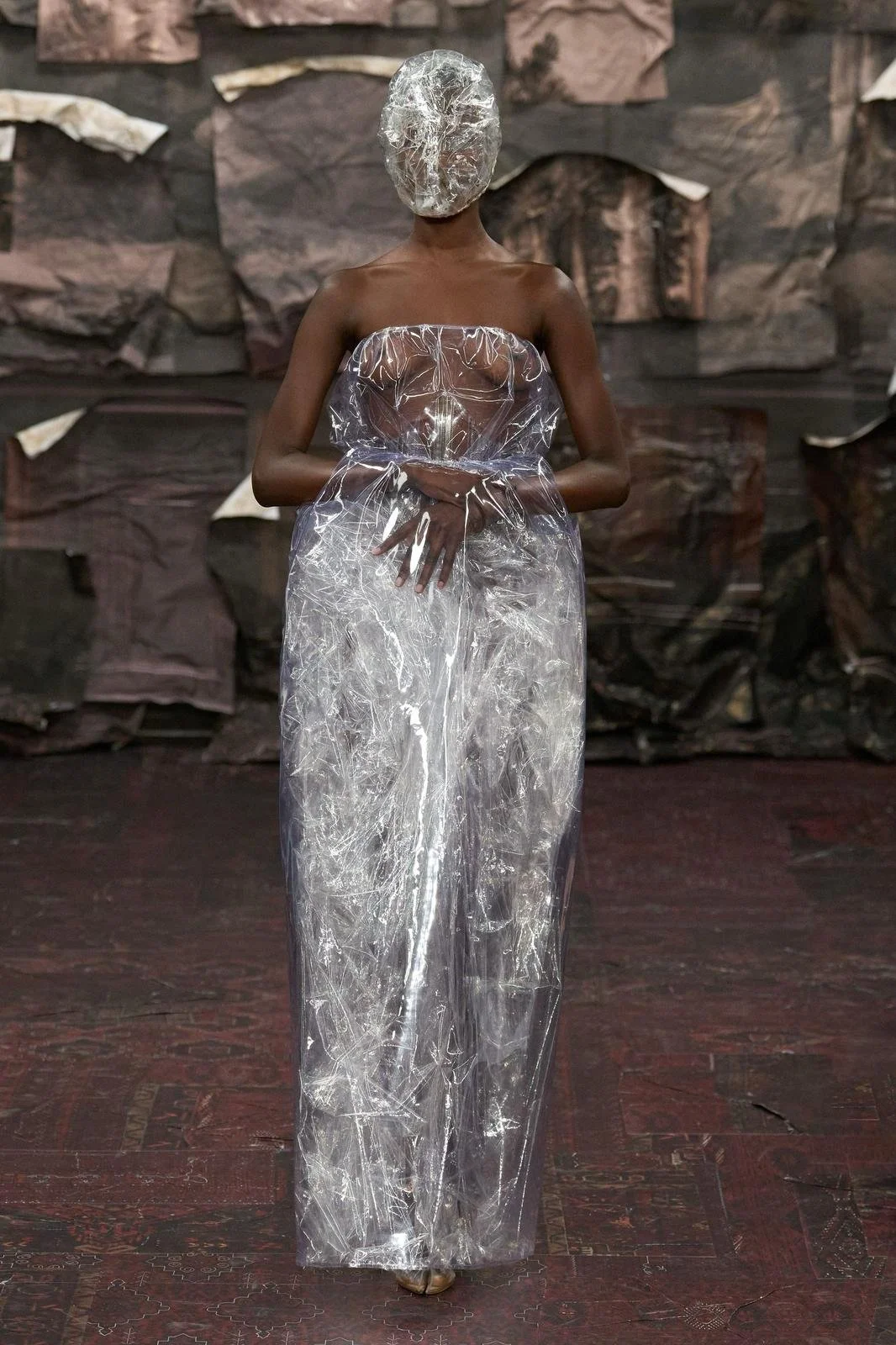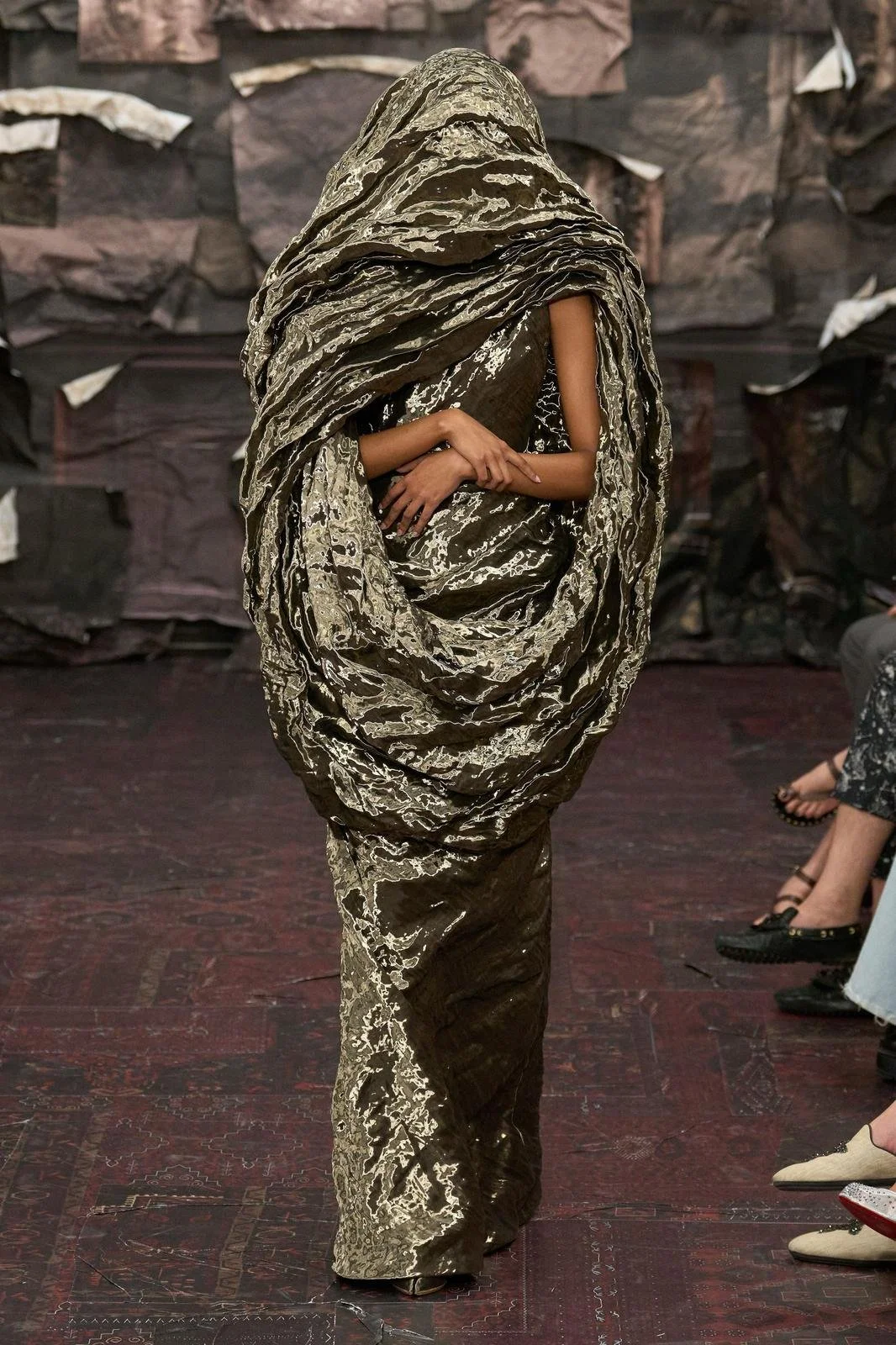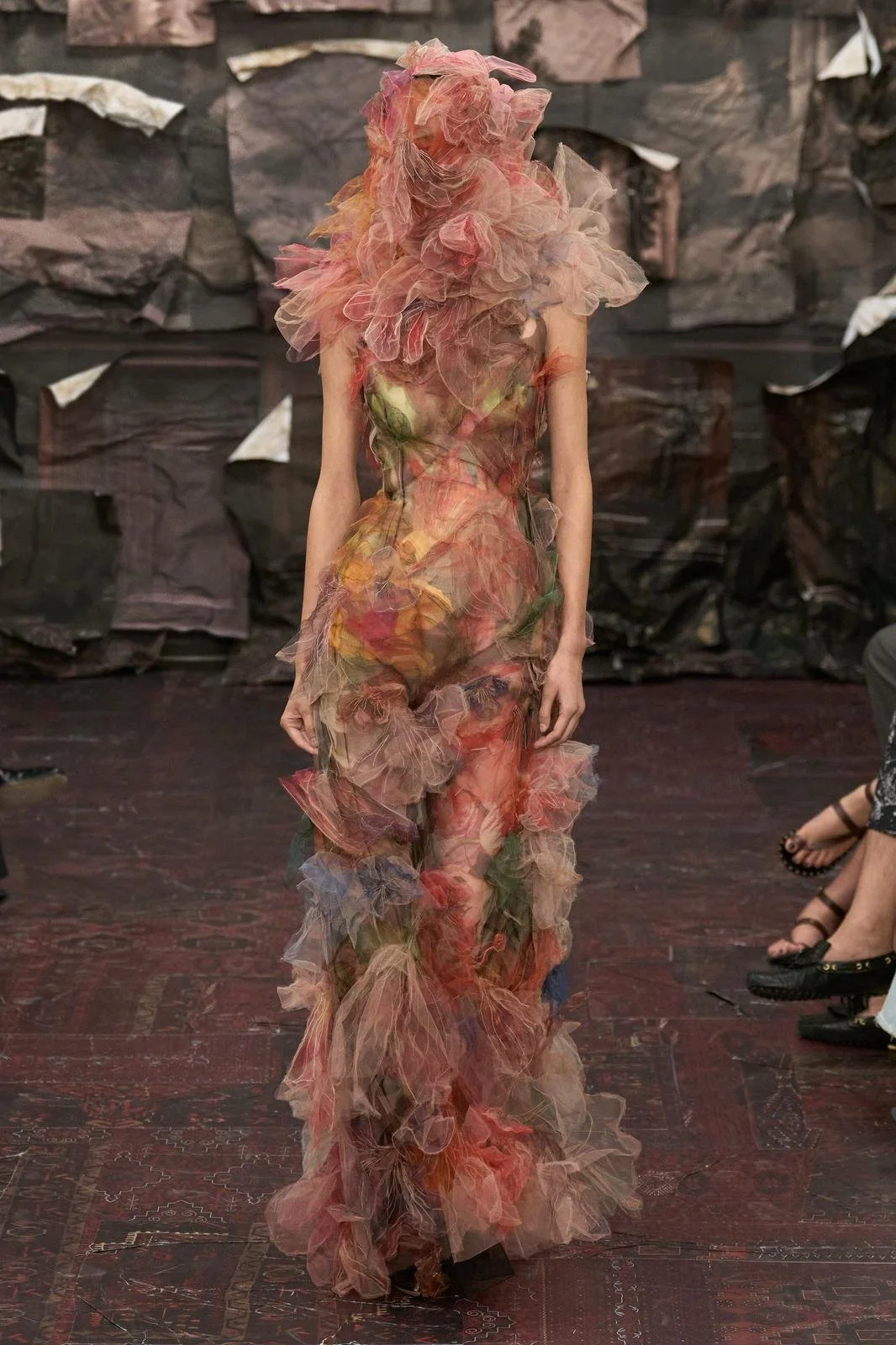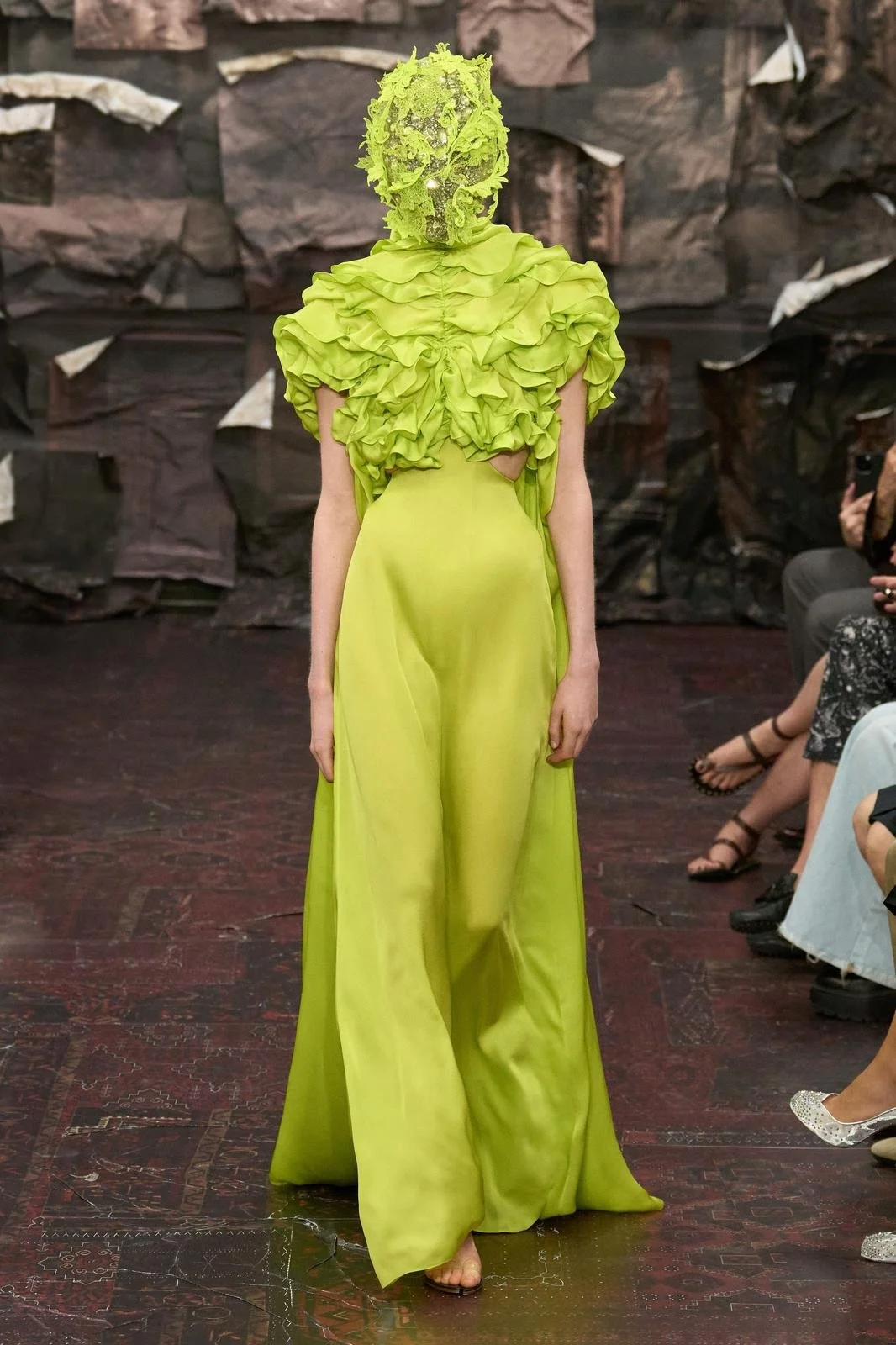Martens at Margiela: Masked, Molten, and Metamorphic
Courtesy of Gorunway.com: Plastic Look
Martens at Margiela: Masked, Molten, and Metamorphic
Glenn Martens’ much-anticipated debut for Maison Margiela Haute Couture landed not with a whisper but with a plastic-cloaked cry. In a fashion week dominated by embellishment and classical beauty, Martens proposed something far more provocative—a vision of couture submerged in synthetic suffocation and the debris of modern life.
The backdrop of the show, a bricolage of salvaged scraps, mirrored the collection’s central tension between hand-crafted high fashion and the mass-produced clothes that surrounds us. Martens’ models emerged like apparitions from the polluted ocean world: their faces veiled with masks, bodies wrapped in translucent plastics that clung to the skin like a warning—the danger of mass-production and pollution. The music, eerie and industrial, amplified the uneasiness.
Was it a message about the materials we celebrate in fashion? Or a provocation, challenging haute couture’s reliance on the “precious” while showing the beauty that might emerge from the discarded?
Courtesy of Gorunway.com: Metal Look
From the opening moments, suffocation was the point. Martens wrapped the models in synthetic materials—plastic, molten metal, rusty patchwork—gesturing toward a world of overproduction, environmental collapse, and the beauty that can arise when we reuse. Indeed, about one third of the collection was made from recycled materials, as iconic Margiela jackets. If couture is the peak of hand-crafted elegance, then Martens flipped it on its head, showing us fashion born from what we throw away.
Courtesy of Gorunway.com: Patchwork Look
The harsh edges slowly dissolved, making way for feathered skirts, floral tulles, and soft fabrics. The final looks—draped gowns that fluttered with haunting elegance—felt like a release. After suffocation, came a breath.
Courtesy of Gorunway.com: Tulle Look
Perhaps the most striking element, in true Margiela style, was the performance itself. Models walked at a slow, almost frightening pace, all blinded by sculptural masks. In a show so visually triggering, this restriction of sight felt like a message from Martens about blind trust, societal conformity, and loss of individuality. Through performance, he reminded us that couture isn’t just about garments but about storytelling. From the engraved spoon tucked into each invitation to the industrial materials that opened the show and the soft, human silhouettes that closed it, Martens ensured every detail spoke to a story of metamorphosis. A chance for change.
Courtesy of Gorunway.com: Green Look
Within the glitz and glam of couture week, Martens delivered a collection that unsettled. It reminded us that fashion, at its sharpest, is not just about aspiration—but confrontation. That beauty doesn’t need to comfort. And that in the age of environmental pollution and identity collapse, couture must also grapple with the ghosts we often choose to ignore.
After Martin Margiela and John Galiano, Glenn Martens, undoubtedly, had big shoes to fill. Yet he stepped into his role with a natural ease, presenting a couture collection that was not only memorable but deeply thought-provoking. His narrative honored house codes while pushing them into untouched territories. The Margiela drama was there in full force, yet this time, with Glenn’s name all over.




